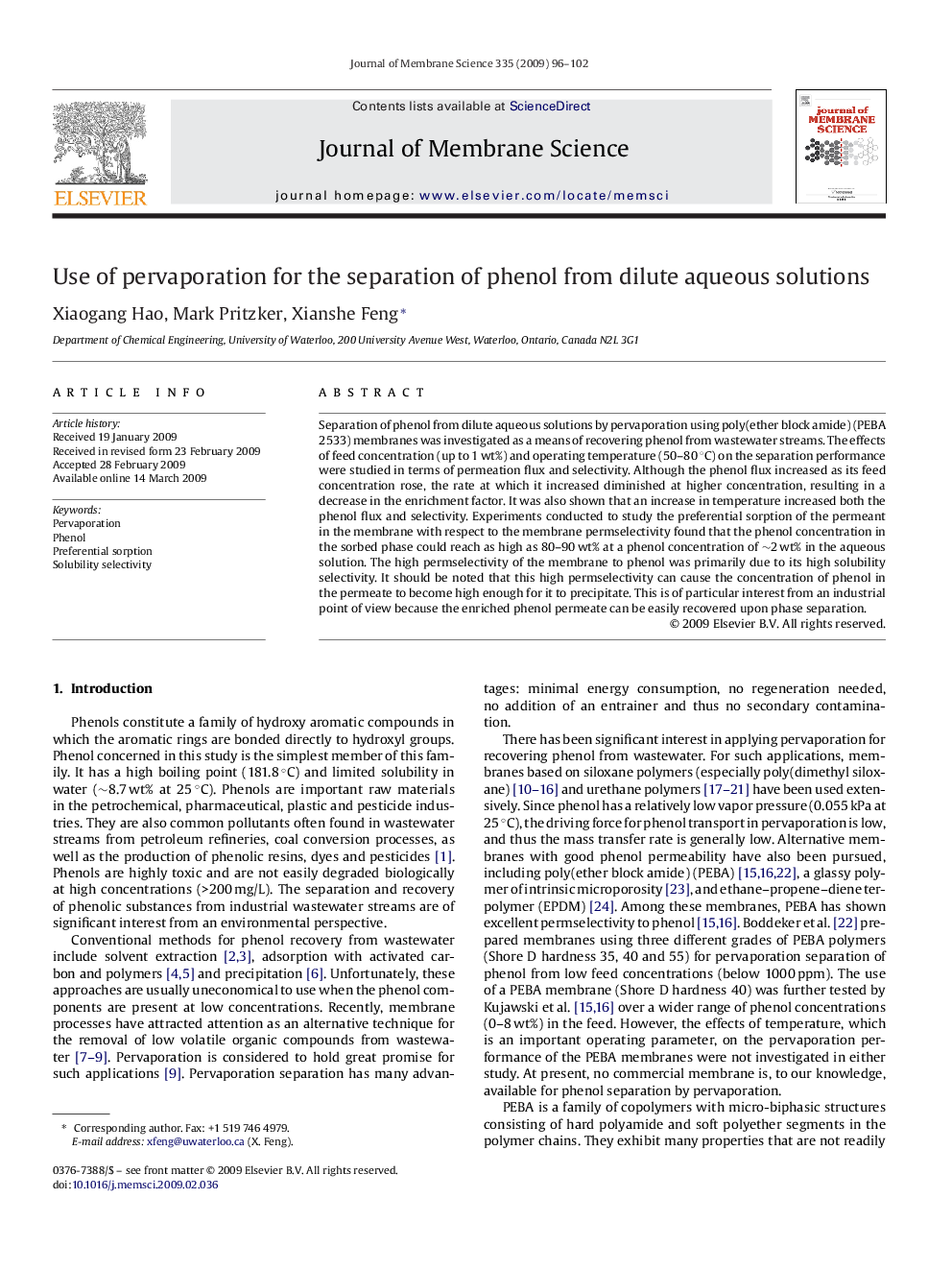| Article ID | Journal | Published Year | Pages | File Type |
|---|---|---|---|---|
| 637093 | Journal of Membrane Science | 2009 | 7 Pages |
Separation of phenol from dilute aqueous solutions by pervaporation using poly(ether block amide) (PEBA 2533) membranes was investigated as a means of recovering phenol from wastewater streams. The effects of feed concentration (up to 1 wt%) and operating temperature (50–80 °C) on the separation performance were studied in terms of permeation flux and selectivity. Although the phenol flux increased as its feed concentration rose, the rate at which it increased diminished at higher concentration, resulting in a decrease in the enrichment factor. It was also shown that an increase in temperature increased both the phenol flux and selectivity. Experiments conducted to study the preferential sorption of the permeant in the membrane with respect to the membrane permselectivity found that the phenol concentration in the sorbed phase could reach as high as 80–90 wt% at a phenol concentration of ∼2 wt% in the aqueous solution. The high permselectivity of the membrane to phenol was primarily due to its high solubility selectivity. It should be noted that this high permselectivity can cause the concentration of phenol in the permeate to become high enough for it to precipitate. This is of particular interest from an industrial point of view because the enriched phenol permeate can be easily recovered upon phase separation.
